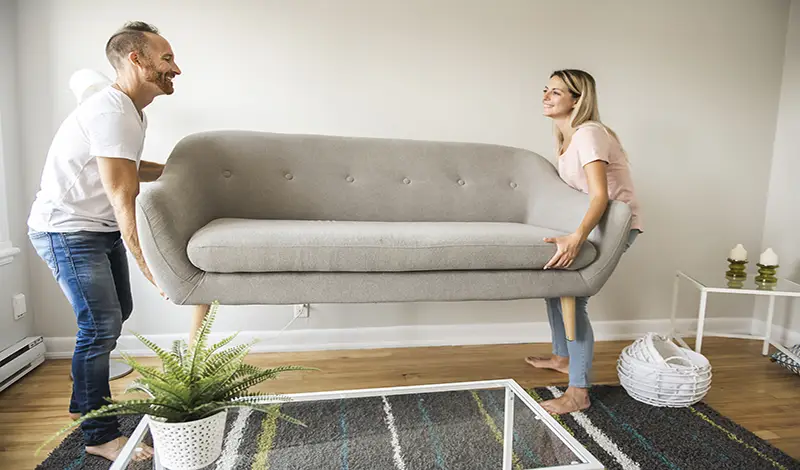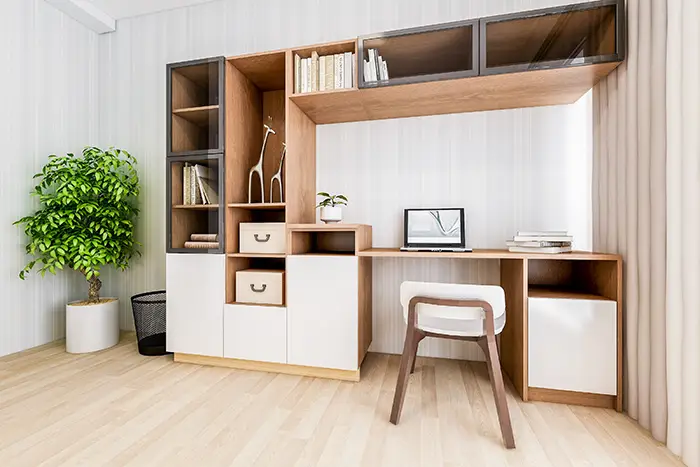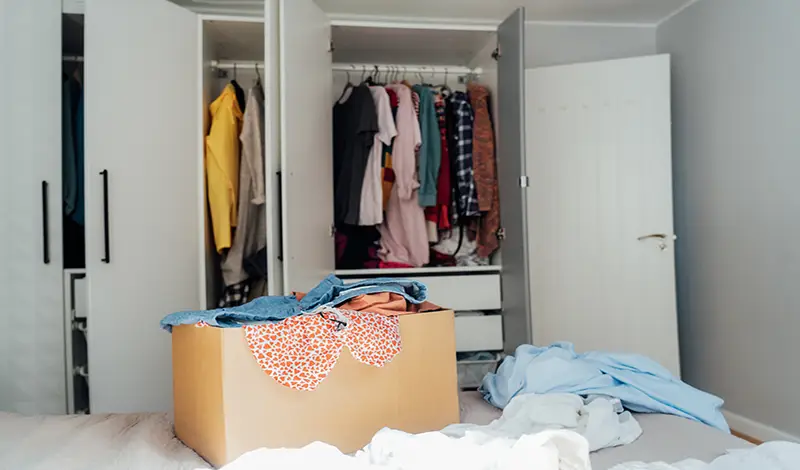Simple Ways to Update Your Home's Layout
Published on October 8, 2024 | 7 Minute read

Melanie
Ortiz Reyes
Content Specialist
Are you feeling stuck in a home that no longer sparks joy? You're not alone. Many homeowners find themselves yearning for a change but are hesitant to dive into a full-scale renovation. The good news? You don't need to break the bank or tear down walls to give your home a fresh new feel. With some creativity and a bit of elbow grease, you can transform your living spaces and fall in love with your home all over again.

1. Rethink Your Furniture Placement
One of the quickest and most impactful ways to change your home's layout is by rearranging your furniture. It's amazing how different a room can feel just by moving pieces around. Here are some tips to get you started:
- Create conversation areas: In living rooms, arrange seating to face each other, encouraging interaction and making the space feel more intimate.
- Float your furniture: Instead of pushing everything against the walls, try floating pieces in the room. This can make the space feel larger and more dynamic.
- Consider traffic flow: Ensure there are clear pathways through each room. You should be able to walk through without bumping into furniture.
- Experiment with angles: Don't be afraid to place furniture at angles. This can add visual interest and make a room feel less boxy.
Remember, there's no one-size-fits-all solution. Play around with different arrangements until you find what works best for your space and lifestyle.
2. Divide and Conquer with Room Dividers
Open floor plans are great, but sometimes you need a bit more definition between spaces. Room dividers can help create distinct areas without the need for permanent walls. Consider these options:
- Bookshelves: A tall bookshelf can serve double duty as storage and a room divider.
- Curtains: Hanging curtains from the ceiling can create a soft divide that's easily opened when you want the full open space.
- Screens: Folding screens offer flexibility and can add a decorative element to your room.
- Plants: Large potted plants or a DIY plant wall can naturally separate areas while adding a touch of nature to your home.
3. Maximize Vertical Space
When floor space is at a premium, look up! Vertical storage solutions can free up valuable square footage and make your home feel more spacious. Try these ideas:
- Wall-mounted shelves: Install floating shelves to display decor, books, or everyday items.
- Hanging organizers: Use over-the-door organizers or wall-mounted systems in closets, bathrooms, and kitchens.
- Floor-to-ceiling bookcases: Custom or ready-made floor-to-ceiling shelving units can transform a wall and provide ample storage.
- Loft beds: In small bedrooms, especially for kids or studio apartments, a loft bed can free up floor space for a desk or seating area underneath.

4. Create Multi-Functional Spaces
As our lives become more flexible, our homes should too. Designing rooms that serve multiple purposes can make your home more versatile and efficient. Consider these multi-functional ideas:
- Guest room/home office: Use a Murphy bed or a daybed to create a space that's both a comfortable guest room and a functional home office.
- Dining room/workspace: Choose a dining table that can double as a work surface, and add storage for office supplies in a nearby cabinet.
- Living room/exercise area: Incorporate hidden storage for workout equipment in your living room furniture, allowing you to quickly transform the space for a workout session.
- Kitchen island/dining table: If space allows, a large kitchen island with seating can serve as both a prep area and a casual dining spot.
5. Lighten Up with Smart Lighting Choices
Lighting plays a crucial role in how we perceive space. By updating your lighting, you can dramatically change the feel of a room without altering its physical layout. Here are some lighting tips:
- Layer your lighting: Combine ambient, task, and accent lighting to create a well-lit and inviting space.
- Use mirrors strategically: Place mirrors opposite windows to reflect natural light and make rooms feel larger and brighter.
- Install dimmer switches: These allow you to adjust the lighting to suit different moods and activities throughout the day.
- Add uplighting: Floor lamps that direct light upwards can make ceilings feel higher and rooms more spacious.
6. Embrace the Power of Paint
Never underestimate the transformative power of a fresh coat of paint. Color can dramatically alter the perception of space and create visual interest. Consider these painting strategies:
- Use light colors to open up small spaces: Whites, creams, and pale neutrals can make rooms feel larger and airier.
- Create an accent wall: A bold color on one wall can add depth and become a focal point in the room.
- Paint ceilings: A light color on the ceiling can make it feel higher, while a dark color can create a cozy, intimate atmosphere.
- Coordinate colors between rooms: Using complementary colors in adjacent rooms can create a sense of flow throughout your home.

7. Declutter and Organize
Sometimes, the best way to update your home's layout is simply to clear out the excess. A thorough decluttering session can make your spaces feel brand new. Follow these steps:
- Sort items into keep, donate, and discard piles.
- Invest in attractive storage solutions for items you're keeping.
- Adopt the "one in, one out" rule to maintain your clutter-free space.
- Create designated spots for everyday items to keep surfaces clear.
8. Bring the Outdoors In
Connecting your indoor and outdoor spaces can make your home feel larger and more inviting. Try these ideas:
- Install large windows or French doors to blur the line between inside and outside.
- Create an indoor garden with houseplants or a vertical garden wall.
- Use natural materials like wood, stone, and woven textiles to add texture and warmth.
- Set up a small seating area near a window to create a cozy spot for enjoying the view.
9. Update Your Window Treatments
Window treatments can have a big impact on how a room feels. Here are some tips for choosing the right window coverings:
- Hang curtains close to the ceiling and extend them beyond the window frame to make windows appear larger.
- Choose light, airy fabrics to let in natural light and make rooms feel more spacious.
- Use Roman shades or cellular shades for a clean, streamlined look.
- Consider motorized blinds or shades for hard-to-reach windows or for added convenience.

10. Add Architectural Interest
Even if you can't make major structural changes, you can add architectural elements to create visual interest and define spaces:
- Install crown molding or baseboards to add elegance and definition to rooms.
- Create a faux fireplace as a focal point in a living room or bedroom.
- Add wainscoting or board and batten to walls for texture and character.
- Use decorative room dividers or screens to create the illusion of separate spaces in open floor plans.
Updating your home's layout doesn't have to involve major renovations or a huge budget. By implementing some of these simple ideas, you can breathe new life into your living spaces and create a home that better suits your current needs and style. Remember, the key is to start small and be willing to experiment. You might be surprised at how a few changes can make a big difference in how you feel about your home.
So, roll up your sleeves and get ready to fall in love with your space all over again. With a little creativity and effort, you can transform your home into a place that truly feels like you – comfortable, functional, and full of personality.